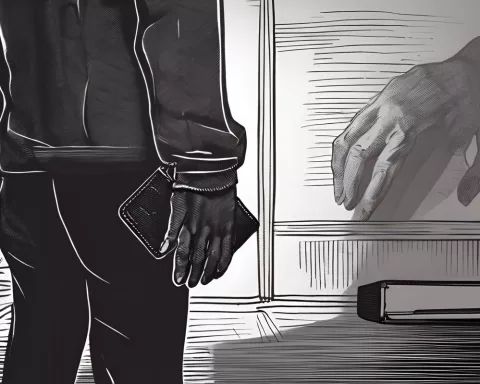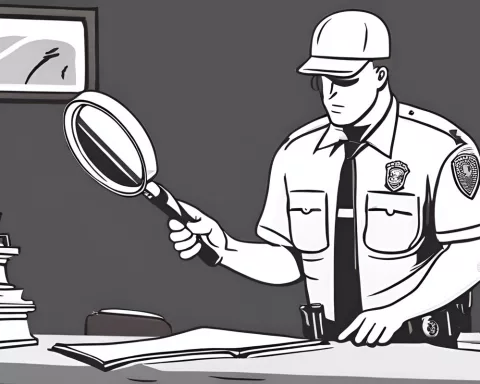Dogs are known for their barking, but sometimes their silence can be just as telling. A dog’s sudden quietude could be a sign of underlying health issues, stress or anxiety, or evidence of their training. It’s important for pet owners to closely observe their dog’s behavior and seek veterinary care if necessary to ensure their happiness and well-being.
Why do dogs suddenly become quiet?
Dogs, like humans, possess distinct personalities and their silence could be an indication of underlying issues. It could be a manifestation of a health concern, mental factors like stress and anxiety, or evidence of their training. Any sudden changes in barking behavior that cannot be attributed to environmental changes or training may require further investigation and consulting a veterinarian is critical to rule out any potential health problems.
Our beloved four-legged friends, dogs, have been lauded over the years for their dynamic range of sounds. Barking forms an integral part of their life, not merely serving a communicative function, but also acting as a unique expression of their diverse emotional range. Interestingly enough, it’s often the silence – the absence of their signature barks – that provides an equally insightful perspective.
Exploring the Complex Canine Persona
Firstly, it’s essential to understand that our faithful companions reflect the intricacies often associated with human beings. Dogs, similar to their human counterparts, possess distinct personalities. Some breeds are naturally gregarious and vocally expressive, while others lean towards an introverted quietude, creating an intricate spectrum of canine personalities. This intricate behavioral landscape in dogs is shaped by factors like genetic inclination, age, environmental triggers, and previous experiences.
When the typically effervescent canine temperament suddenly veers towards quietude, it raises questions. As with humans, an unexpected shift in a dog’s behavior could be an indication of underlying issues. The sudden quietude could be a silent manifestation of a health concern. For instance, a dog could suddenly limit its barking due to discomfort or pain involving the vocal apparatus such as the throat, mouth, or respiratory system.
The Psychological Impact on Canine Silence
We should also consider the mental factors at play. Dogs are prone to experiencing stress and anxiety, which can lead to behavioral changes, including a decrease in barking. Changes in routine, abrupt exposure to unfamiliar environments, or lingering effects of past traumas can all lead to their silence.
Professionally trained dogs may display silence as evidence of their training rather than a sign of distress. Dogs can be taught to control their barking through positive reinforcement methods. Therefore, their relative quietness could simply be a proud indication of their disciplined conduct.
However, when should one view the silence as a forewarning of a potential problem? Any sudden changes in barking behavior that cannot be attributed to environmental changes or training may require further investigation. Consulting a veterinarian is critical to rule out any potential health problems. Similarly, if a dog’s silence is accompanied by worrying symptoms such as loss of appetite or visible discomfort, it necessitates immediate veterinary intervention.
Unraveling the Triggers & Responding to Canine Silence
The dog’s environment can also influence its periods of silence. An abrupt change in routine or surroundings might temporarily suppress a dog’s vocal tendencies. While this could merely be a temporary adjustment phase, it’s crucial to attentively observe their behavior and offer reassurance during these periods of silent transition.
As a conscientious pet owner, what steps can be taken in response to a dog’s silence? Careful observation of the dog’s behavior might reveal potential triggers or patterns connected to their silence. If the silence is persistent or is coupled with worrisome changes in behavior or physical health, it becomes crucial to schedule a veterinary examination. Ensuring a comforting environment, filled with favorite toys, familiar settings, and positive social interactions, can alleviate stress and foster wellbeing. Encouraging desired behavior by rewarding quiet moments can help create a supportive atmosphere for the dog.
The Bigger Picture: Understanding Canine Silence
In the larger context, it’s important to note that a dog’s silence is not always an indication of a looming problem. It could merely be a representation of their independent behavior or a temporary response to alterations in their environment. The subtlety of canine silence highlights the importance of understanding our pets’ individuality, closely observing their behavior, and seeking professional advice when necessary. This narrative further accentuates the pivotal role we play in safeguarding their happiness and wellbeing. Their stories, whether told out loud or through silence, unfold under our care. It’s essential that we remain attentive listeners, for even in silence, there’s a story worthy of our attention.
1. Why do dogs suddenly become quiet?
Dogs can suddenly become quiet due to underlying health issues, stress or anxiety, or evidence of their training. Any sudden changes in barking behavior that cannot be attributed to environmental changes or training may require further investigation, and consulting a veterinarian is critical to rule out any potential health problems.
2. How does a dog’s personality influence their silence?
Dogs, similar to their human counterparts, possess distinct personalities. Some breeds are naturally gregarious and vocally expressive, while others lean towards an introverted quietude, creating an intricate spectrum of canine personalities. This intricate behavioral landscape in dogs is shaped by factors like genetic inclination, age, environmental triggers, and previous experiences.
3. What are the mental factors at play in canine silence?
Dogs are prone to experiencing stress and anxiety, which can lead to behavioral changes, including a decrease in barking. Changes in routine, abrupt exposure to unfamiliar environments, or lingering effects of past traumas can all lead to their silence.
4. When should one view a dog’s silence as a forewarning of a potential problem?
Any sudden changes in barking behavior that cannot be attributed to environmental changes or training may require further investigation. Consulting a veterinarian is critical to rule out any potential health problems. Similarly, if a dog’s silence is accompanied by worrying symptoms such as loss of appetite or visible discomfort, it necessitates immediate veterinary intervention.
5. How can pet owners respond to a dog’s silence?
Careful observation of the dog’s behavior might reveal potential triggers or patterns connected to their silence. If the silence is persistent or is coupled with worrisome changes in behavior or physical health, it becomes crucial to schedule a veterinary examination. Ensuring a comforting environment, filled with favorite toys, familiar settings, and positive social interactions, can alleviate stress and foster wellbeing. Encouraging desired behavior by rewarding quiet moments can help create a supportive atmosphere for the dog.
6. What is the bigger picture regarding canine silence?
In the larger context, it’s important to note that a dog’s silence is not always an indication of a looming problem. It could merely be a representation of their independent behavior or a temporary response to alterations in their environment. The subtlety of canine silence highlights the importance of understanding our pets’ individuality, closely observing their behavior, and seeking professional advice when necessary.












